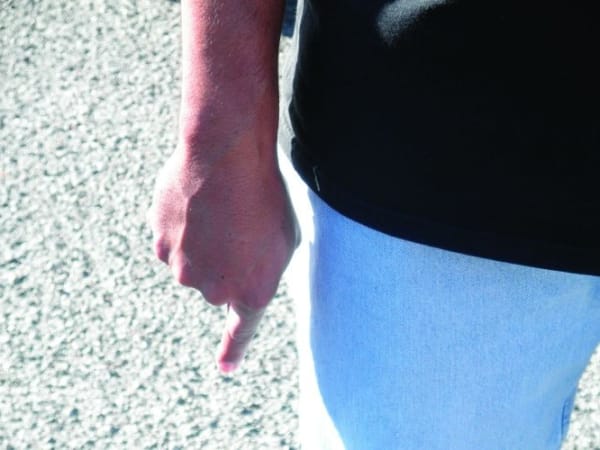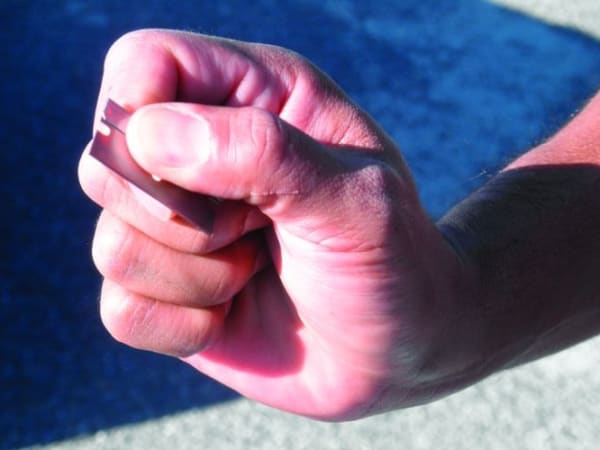Many of the criminals now being released have learned to use small edged weapons in prison. Some of these inmates are very skilled at using these blades to slice and kill. Job one for a police officer is to not get cut and to stop the attack. After viewing these photos, read our full article, "Defending Against Small Edged Weapons."
Small Edged Weapons

If you are unable to block, another option is to pass the blade. Passing involves going with the suspect's arm momentum and pushing his arm across his body.

When passing, the officer's goal is to glue himself to the suspect's arm. Some blade instructors call this cohesion or sticky hands.

When you have no room to move, you may need to trap the blade. This is the riskiest option. If you decide you must trap the blade, one of the best options is to wrap your arm over the top of the suspect's arm.

In all knife defense techniques, you should draw your gun while you are defending against the blade.

If the suspect wants a greater element of surprise, she may grip the blade with a scalpel grip, which is very difficult to detect and easy to use.

Suspects may use a scalpel grip to hide small and large blades. With this in mind, it is generally a good idea to have the suspect spread his fingers apart before you get close to him.

With small blades without a handle, the suspect will usually hold the blade between the thumb and index finger using a standard grip.

A block uses strong force, generally with the outer forearm to keep the blade away from the defender.

